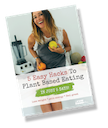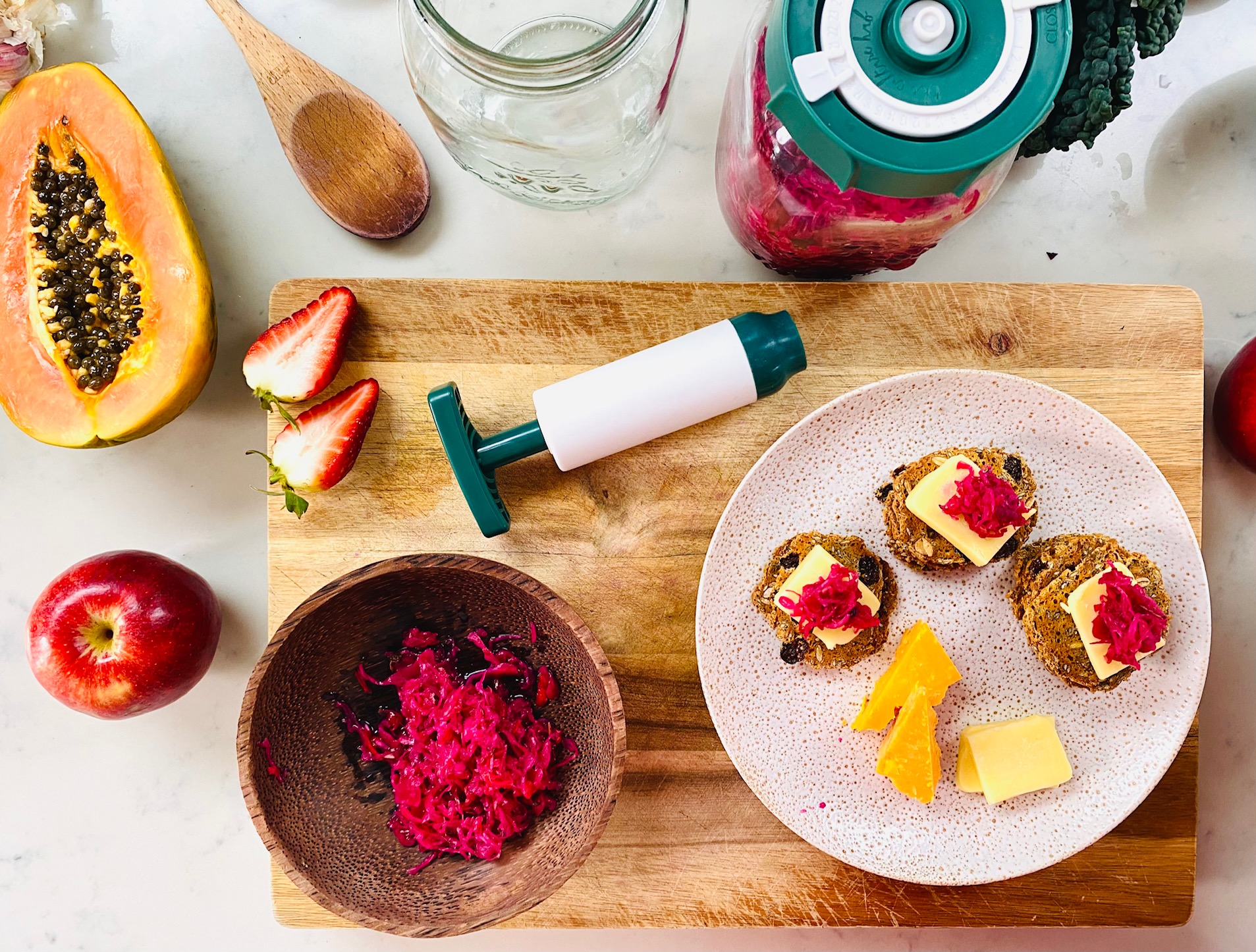You may have seen beautiful pictures of jars filled with colorful veggies or heard your friends talking about the sauerkraut recipe they just made.
If you’re interested in fermenting foods, you’re not alone!
Fermentation is having a moment and for good reason. Not only is it a great way to preserve foods, but it also adds beneficial probiotics to your diet. Before you jump online to buy supplies, let’s go over the essentials for fermenting foods here.
Anaerobic vs Aerobic Fermentation
The first step in fermenting foods is deciding which method you will use.
The two most common methods are anaerobic fermentation and aerobic fermentation.
Anaerobic fermentation does not require oxygen, while aerobic fermentation does.
An important thing to note is aerobic fermentation can introduce undesirable bacteria as you have less control over the ferment (as oxygen can get in).
Equipment Needed for Fermentation
If you decide to do anaerobic fermentation, you will need an airtight container like a glass jar or crock with a tight-fitting lid such as a specialized fermentation lid with an airlock in the lid.
The vessel should be clean and dry before use. You will also need a weight to keep your vegetables submerged under the brine (salt water). A plate that fits inside your jar or crock works well, or you can purchase special glass weights made for fermenting which fit mason jars perfectly and are reusable.
If you decide to do aerobic fermentation, you will still need a clean vessel, but it does not have to be airtight. A bowl covered with a clean cloth secured with a rubber band or mason jar fitted with a screen works well for this method.
Get your vegetables ready to ferment
In either case, you will need fresh vegetables that have been washed and chopped as well as pink or kosher salt (do not use table salt as it won’t work) and filtered water.
The ratio of salt to water should be 2 tablespoons of pink or kosher salt per 1 quart of water if doing a liquid brine method.
There’s also the dry salt brine method which is approximately 2 teaspoons of pink or kosher salt per head of cabbage.
You can also add spices like peppercorns, dill seed, or mustard seed if desired.
Once you have gathered your supplies and ingredients, it’s time to start fermenting!
Conclusion:
With just a few supplies and ingredients, you can start fermenting foods at home! Check out the web for fermentation recipes or try our sauerkraut recipe here.
Fermentation is a great way to preserve food and add beneficial probiotics to your diet. Be sure to gather an airtight container (if doing anaerobic fermentation), fresh vegetables, salt, and filtered water before getting started. Have fun experimenting with different spices and flavor combinations!
Ready to get started?
Check out our vegetable fermentation jar kit here if you’re a beginner & want all the equipment you need to get started pronto including recipes! Or if you love the idea of having three of your favourite fermented foods on the go at any one time check out our fermentation kit top up pack here.
Did you know?
Eating fermented foods may help with anxiety. Check out this article here for more info.




